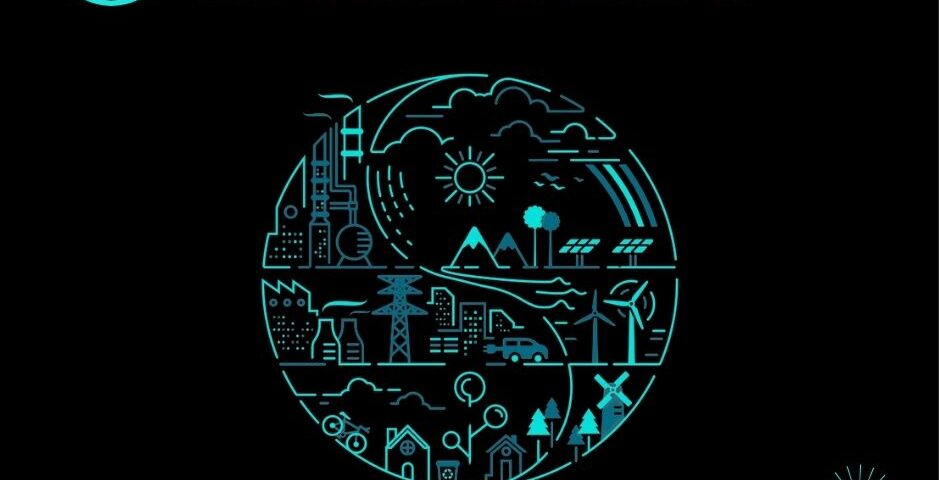
Vision and Goals 2024: A checklist for turning your dreams into reality.
November 27, 2023
Find your tribe: the power of community in achieving your goals.
February 22, 2024
We’re witnessing a clean energy revolution right before our eyes, and 2024 will be the year solar and clean energy sources begin to not only share the market but begin to dominate fossil fuels and other non-renewable energy sources.
So, I wanted to share some of the clean energy trends we’ll see in 2024 and beyond. After reading this, you’ll realize that the future is bright for solar, wind power, hydro, underground renewables, biofuel sources, and more!
1. Advancements in photovoltaics
Photovoltaics (PV) – or the process of converting light into energy using semiconducting materials – will continue to see huge advancements in 2024. That includes increased efficiency of using PV in our surroundings without taking up additional land or space, including floatovoltaics, and agrivoltaics.
Solar panels are becoming as thin as film cells, more flexible, lightweight, and cost effective, bringing near limitless possibilities in our everyday lives.
2. Solar skyrockets!
Thanks in large part to these advancements above and an exponential need to cool our warming planet, solar usage will continue to grow in 2024. In fact, based on projects already announced, solar should more than triple in 2024, continue to grow in an order of magnitude in 2025 and 2026, and meet total US demand by 2030!
That’s especially impressive if you consider that in 2022, 85% of U.S. electricity demand was provided by non-renewable resources or fossil fuels. The future of solar is now!
3. AI aids clean energy
It seems like Artificial Intelligence is showing up in just about every aspect of our lives, and clean energy production is no different.
Our energy grid infrastructure is mind-numbingly complex and requires lightning-fast decisions with huge impact. AI looks to aid our capacity to make those real-time decisions with precision, as well as aid forecasting power consumption, predictive maintenance, and integrating big data to make our energy grid run cleaner, smoother, more cost-effective.
4. Green Hydrogen
Most people don’t realize that hydrogen gas holds the highest energy density of all fuel sources, producing almost no GHGs (greenhouse gas emissions). The issue is that the majority of hydrogen is cultivated from non-renewable sources (called brown or grey hydrogen).
But over the past few years, we’ve begun to adopt green hydrogen, which is cleaner but also comes with issues of low efficiency in fuel cells and transportation problems. So, impending advancements in green hydrogen we’ll see in 2024 and beyond will improve our ability to store, transport, and distribute green hydrogen.
5. Energy produced from bio-sources
Aside from the typical wind, hydro, and solar power we refer to when we talk about renewable energy, bio energy, created from biomass sources, is on the rise. We’re getting very close to the point where our cars can run on liquid biofuels, or at least see some sort of mix between gasoline and biofuels. We’re also seeing massive growth in bio-ethanol fuels, which adopt fermentation of food grain, food waste, and plants into fuel.
6. Wind energy blows back
Wind may be an ancient energy source, but it’s still evolving and proving exciting new possibilities. The newest trends in wind power focus on offshore wind turbines as well as airborne wind generation, reducing the need for more space with land-based wind turbines. Technological advances in wind blades as well as turbines and generators are vastly improving the efficiency and potential of wind power.
7. Innovations in batteries and energy storage systems
One of the chief challenges facing renewable energy growth is the limitations in storage and distribution, which are needed for irregular production (remote locations, when there’s no wind, no waves, winter, no sun, etc.). Luckily, the next big evolution in clean energy is coming in the form of Distributed Energy Storage Systems.
Flow state batteries serve the needs of consistent but lower energy needs, while solid state batteries offer high density energy and are lightweight for transport. There are even ways to store energy now without batteries, like compressed air technologies and pumped hydro.
The technological leaps in energy storage and distribution we’ll be seeing in 2024 are truly amazing!
8. A resurgence in underground renewables.
Clean energy advances won’t just come from the skies or the waves, but also underground. Often lost in the conversation, clean energy sources beneath the earth include renewable natural gas and geothermal.
Remember that there won’t be one clean energy source that meets all of our needs, but a matrix of overlapping energy solutions that work in tandem or just as back-ups. Advances in technology and drilling that allow geothermal and other underground renewables to become more viable in that clean energy matrix are here.
9. Expanding the clean energy workforce
As clean energy grows and thrives, it will require an army of skilled workers to serve those needs, which also creates an invaluable opportunity for the U.S. economy.
In fact, over the past two years, jobs in clean energy have risen 10% faster than the U.S. job market as a whole. There are now more than 3.3 clean energy jobs, the majority in clean energy efficiency (68%), but also renewable generation (16%), clean vehicles (11%), and storage and grid jobs (5%).
As a lot of manufacturing and tech jobs around clean energy come home to the U.S. from China, we’ll see an explosion in the prevalence of great jobs in the clean energy field and upskilling employees.
10. Legislation and tax advantages to reduce bottlenecks
This year, we’ll see historic clean energy legislation take greater hold, with a wave of new (or clarified) tax credits, loan programs, and grant funding.
For instance, to date, only about 10% of IRA grant funding has been allocated. With $7 billion for the Greenhouse Gas Reduction Fund grants, $3 billion available to lend through the Department of Energy’s (DOE’s) Loans Program Office (LPO), and a myriad of tax credits taking hold, the government has made a historic commitment to solar power.
Between a flow of public and private investments and capital, solar will continue to skyrocket, residential tech will expand, storage capacity will go to new heights, and onshore wind will blossom in 2024!
***



